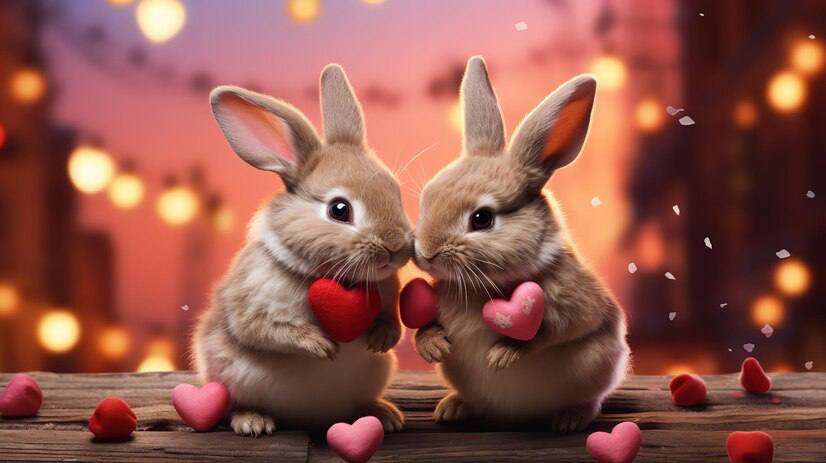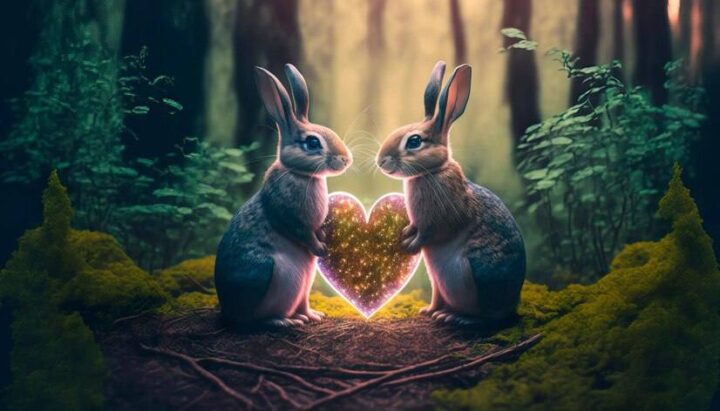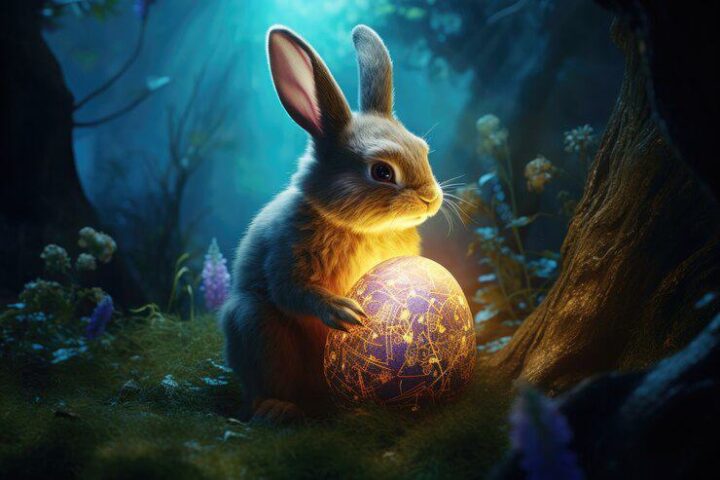Do Rabbits Mate for Life?
Rabbits are often recognized for their adorable and gentle nature, but their mating and social behaviors are less commonly understood. People often ask, “Do rabbits mate for life?” The short answer is no.
Rabbits mate differently from animals like swans and wolves, which are popular for their monogamous relationships. The lack of lifelong monogamy in wild rabbits is an evolutionary trait that enhances their reproductive success.
By mating with multiple partners, both males and females increase the likelihood of producing offspring with a mix of genetic traits. It can be beneficial in adapting to changing environments or resisting diseases.
After mating, the female is solely responsible for raising the offspring. She will prepare a nest, give birth, and nurse the young until they are old enough to fend for themselves. The male does not participate in the care of the offspring and continues to seek out other mating opportunities.

Understanding the Behaviour of Wild Rabbits
Wild rabbits belong to the family Leporidae and are diverse habitats across the globe. These small mammals are known for their agility, keen senses, and rapid reproduction rates.
Several species of wild rabbits live on planet Earth but the most common is the European rabbit (Oryctolagus cuniculus). Since then they moved to other parts of the world including North America.
Wild rabbits typically inhabit areas with ample vegetation that provides them with food and cover from predators.
They are most active during dawn and dusk and this behavior is popular as crepuscular activity. Rabbits are highly social animals and often live in large groups called colonies. These colonies help them protect themselves from predators.
The reproductive strategy of wild rabbits is one of the key factors contributing to their survival. Predation and the environment have influenced wild rabbits to reproduce fast and frequently throughout their lifespan, which ranges from one to nine years.
A single female rabbit, known as a doe, can produce multiple litters per year, each containing several kits (baby rabbits).
Mating Habits of Bunnies

Do rabbits mate for life? No, they follow a polygynandrous mating system, where both males and females may have multiple partners. This system increases genetic diversity within the population and is beneficial for the species’ adaptability and resilience.
Rabbits engage in courtship ritual behaviors such as chasing, circling, and leaping before mating. This display not only helps the male (buck) prove his fitness to the female but also stimulates the female to enter estrus (a period of fertility).
Males are often territorial and will compete for access to receptive females. Dominant males, who are usually larger and more aggressive, have better chances of mating with multiple females.
Territorial disputes among males can be intense, with physical confrontations sometimes leading to injury.
Mating Season of Rabbits

While rabbits do not form permanent pair bonds, they may exhibit temporary pairings during a breeding season. A male rabbit (buck) may remain close to a female (doe) for a short period to ensure that he is the one who fathers her offspring.
However, once mating has occurred, the buck typically moves on in search of other potential mates. Wild rabbits do not have a strict mating season, but their breeding activity is generally higher in the spring and summer months when food is more abundant.
This seasonal breeding ensures that the young are born during times of optimal resource availability, increasing their chances of survival.
Factors such as temperature, daylight length, and food availability significantly influence the timing and frequency of breeding. Temperate regions may have rabbits breeding year-round, but harsher climates may have rabbits breeding only during the warmer months.
Once mating has occurred, the female will undergo a gestation period of about 28-31 days. She will prepare a nest, often in a burrow, lined with fur she plucks from her body. The kits are born blind and helpless but grow rapidly, becoming independent within a few weeks.
Conclusion
To sum up, wild rabbits do not mate for life. The mating behavior of wild rabbits is a remarkable example of nature’s ingenuity in ensuring the survival of a species.
A variety of habitats has allowed wild rabbits to adapt their social structures and reproductive strategies to thrive. These animals play a vital role in a variety of ecosystems and understanding their behavior gives us insight into their lives.


